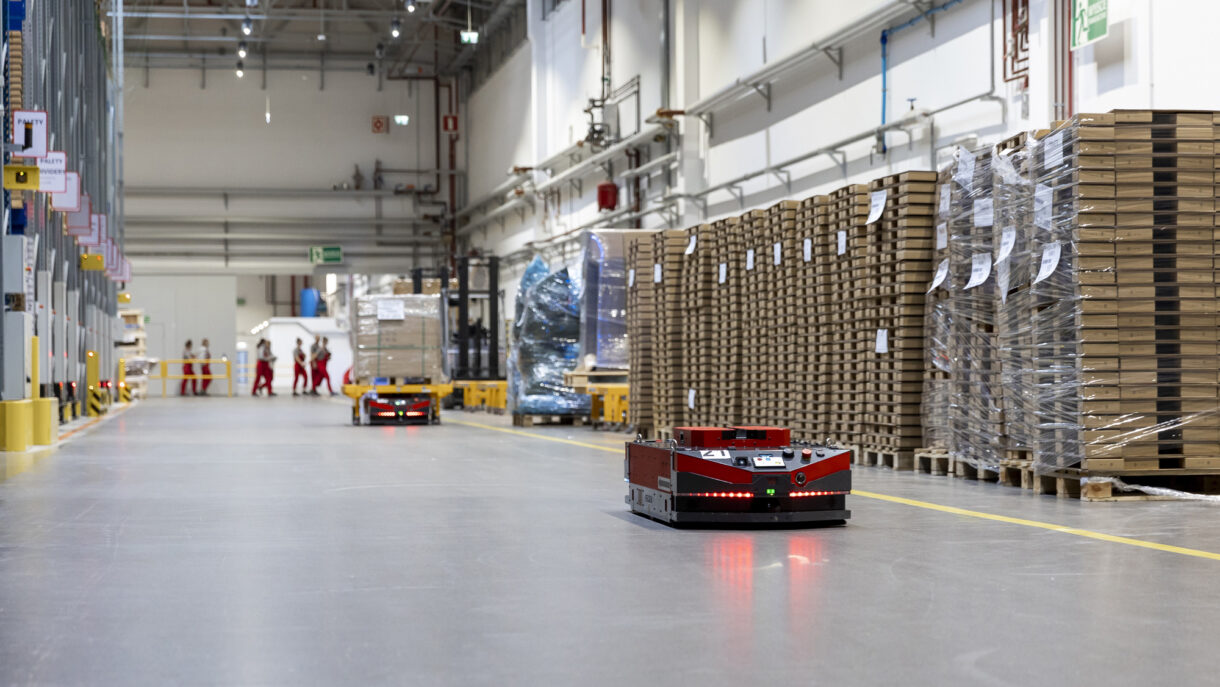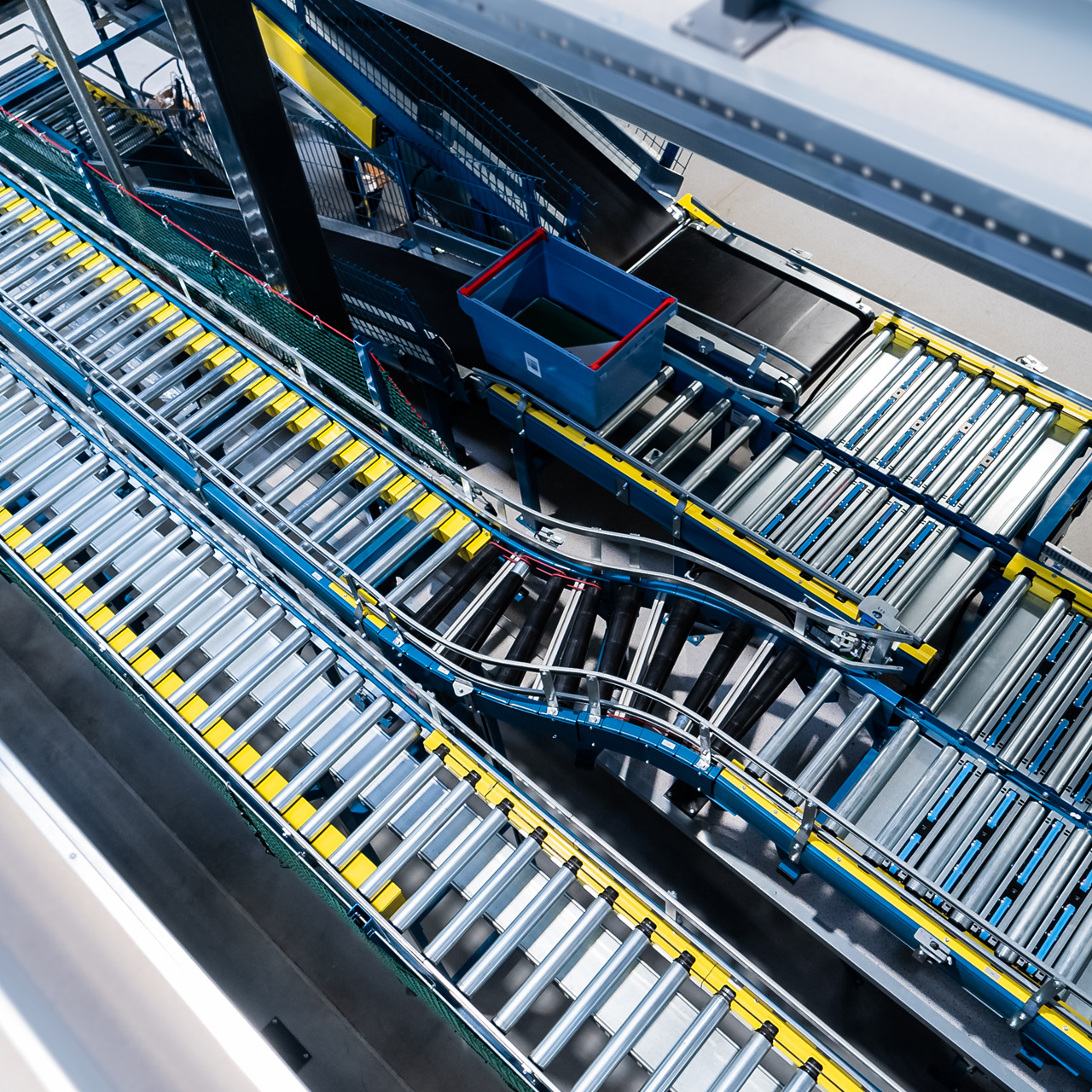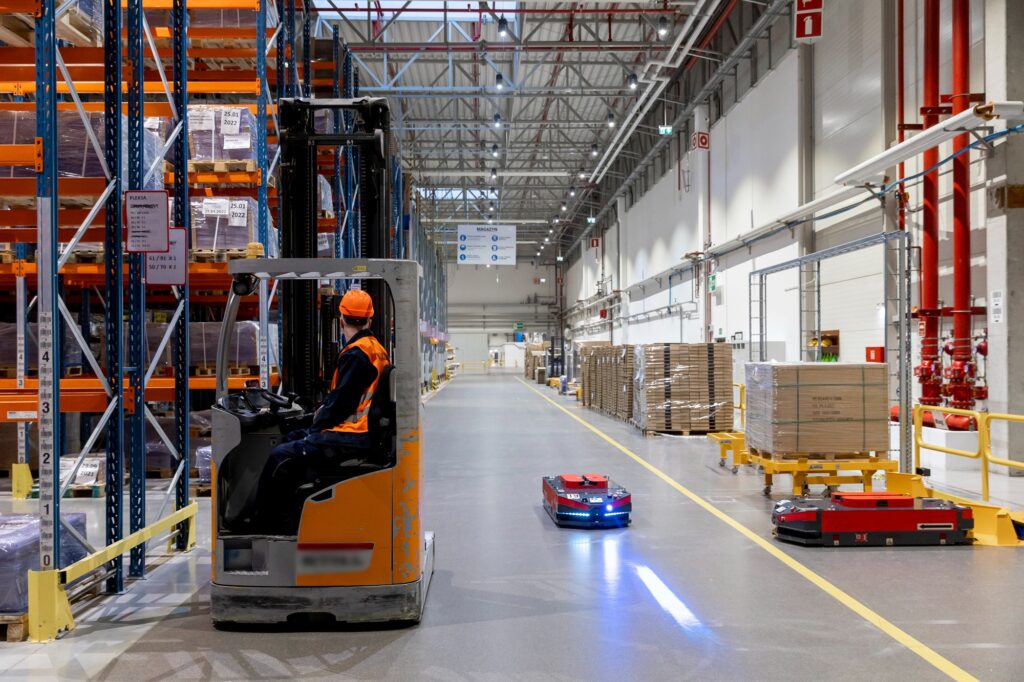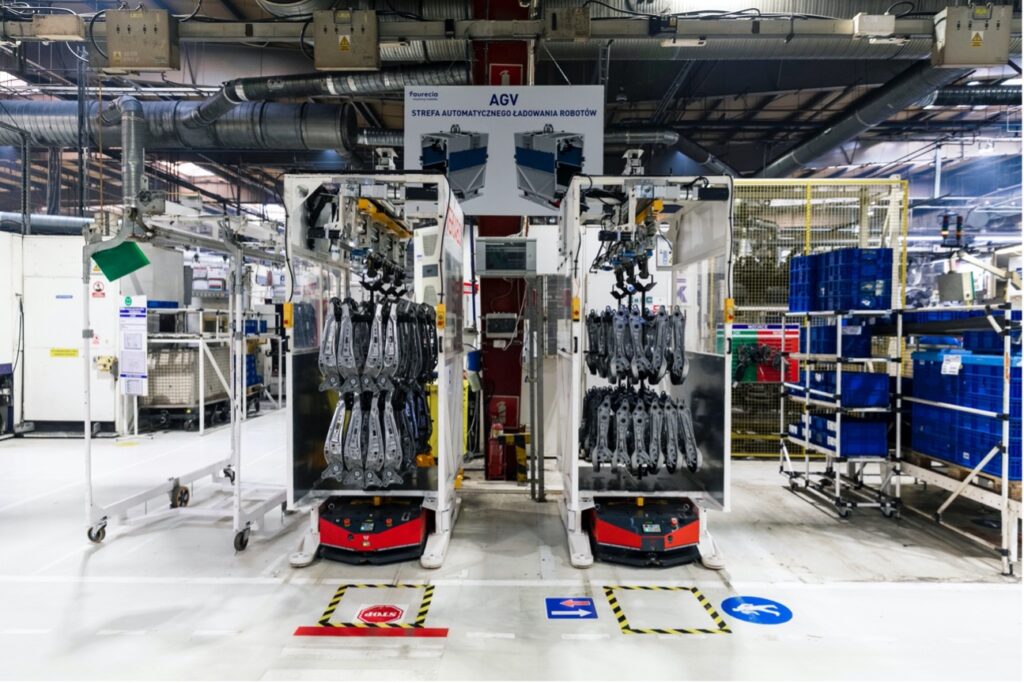Why should warehouse automation start with the implementation of AMRs?

Automation of warehousing processes is one of the hot topics in the manufacturing, freight forwarding, and e-commerce industries. The key question is: where should the automation of warehouse processes and management begin? In this article we show that the first stage of warehouse automation should be the implementation of Autonomous Mobile Robots (AMRs). We will demonstrate this using the example of VERSABOT robots made by VersaBox.
To understand why it’s worth starting warehouse automation with the implementation of AMRs, you have to analyse the capabilities and requirements of other solutions.
What warehouse processes can be automated?
Warehouse automation is a very broad term. Most often it encompasses selected processes like order picking, horizontal transport, and storage of goods on high racks. The other end of the warehouse automation spectrum are fully automated warehousing spaces, which are comprehensive, maintenance-free systems for receiving goods and issuing completed orders. Fully automated warehouses have many advantages and one major disadvantage: investment costs. The first pilot projects of fully automated warehouses are already in operation. However, they are being carried out by corporate giants with huge budgets, including Amazon and JD.com, a Chinese retail elephant.
For complete automation of warehouse processes to become reality, it’s necessary to build a warehouse from scratch. Modernisation of existing facilities usually makes no economic sense. This would mean not only extremely high costs, but also closing down the warehouse for many months. And that means more expenses.
An alternative to total automation is to hand over selected warehousing processes to intelligent machines. Of the three processes mentioned above, automated storage and order picking require the installation very expensive industrial robots. In the case of storage, for example, these could be automated pallet stacker cranes, and belt and roller conveyors could be used to create goods circulation loops for order picking. These solutions are effective but not at all flexible, and as a result expensive to operate. Changing the flow of goods between different zones of the warehouse requires a time-consuming and expensive process of conveyor refitting. It’s even more costly to use pallet stacker cranes. Both solutions would make it impossible for forklifts and people to occupy and work in the same space.
Even a cursory overview of the possibilities of payload flow within a warehouse clearly shows that automation is difficult and costly. Reduction of costs and the associated investment risk requires the use of more flexible solutions.
Advantages of warehouse automation using AMRs
Unlike automated storage and order picking, internal transport has a big and relatively easy-to-tap-into optimisation potential. The list of key advantages of automating intralogistics using VERSABOT AMRs, in conjunction with other automation opportunities, is very appealing:
- low entry threshold – compared to other industrial robots and warehouse automation systems, the implementation of VERSABOT robots is relatively inexpensive; additionally, AMRs are cheap to operate, and the fleet management system developed by VersaBox allows for easy optimisation of internal transport,
- no infrastructure interference – the implementation of VERSABOT robots doesn’t require a lot of interference into the warehouse infrastructure: they don’t need any markers for navigation or any significant changes in the warehouse layout; VERSABOTS can be easily deployed in both new and existing warehouses,
- easy to scale – implementation can start with a single robot, and then followed by a fleet expansion with as many robots as you want,
- real flexibility – the redevelopment of an intralogistics system based on AMRs consists of reprogramming routes, which can be done quickly and practically at no cost; a similar alteration in the case of industrial conveyors is not only costly but also requires time to move, reconnect, and test the conveyors, which often require new parts,
- easy adaptation to the working environment – on one hand it means VERSABOTS can operate in the same spaces as people and other machines, and on the other hand the fleet management system can be easily integrated with other software used in warehouses.
Fast return on investment
Due to a low entry threshold and a huge cost optimisation potential, a VERSABOT deployment could pay for itself in just 1-2 years. In the case of AMRs, there’s a big economy of scale at work: the bigger the fleet we implement, the better the effects we can achieve.
The strength of the solutions offered by VersaBox comes from the synergy of hardware and software. Thanks to appropriate modules, the AUTONOMY@WORK platform allows you not only to manage your fleet, but design, monitor, and model an intralogistics system from scratch. Big savings are achievable due to the possibility of testing alterations and planned modernisations on a virtual model. You can predict risks, that will arise after introducing certain adjustments in the operation of internal transport, with a high probability. This is a very attractive alternative to the time-consuming and incredibly costly attempts to make changes in the real-life warehouse.
Summary
VersaBox is an autonomous mobile robots supplier to help your company optimize its intralogistics processes. Warehouse automation is increasingly the only way to keep business processes running smoothly and to improve their efficiency, to improve customer satisfaction, and ultimately to increase your competitive advantage. There’s no escaping the automation of warehousing processes. The easiest way to robotise those processes is to implement intralogistics based on AMRs. One of the most attractive offers on the Polish market are VERSABOT robots and the AUTONOMY@WORK internal transport management system developed by VersaBox.



